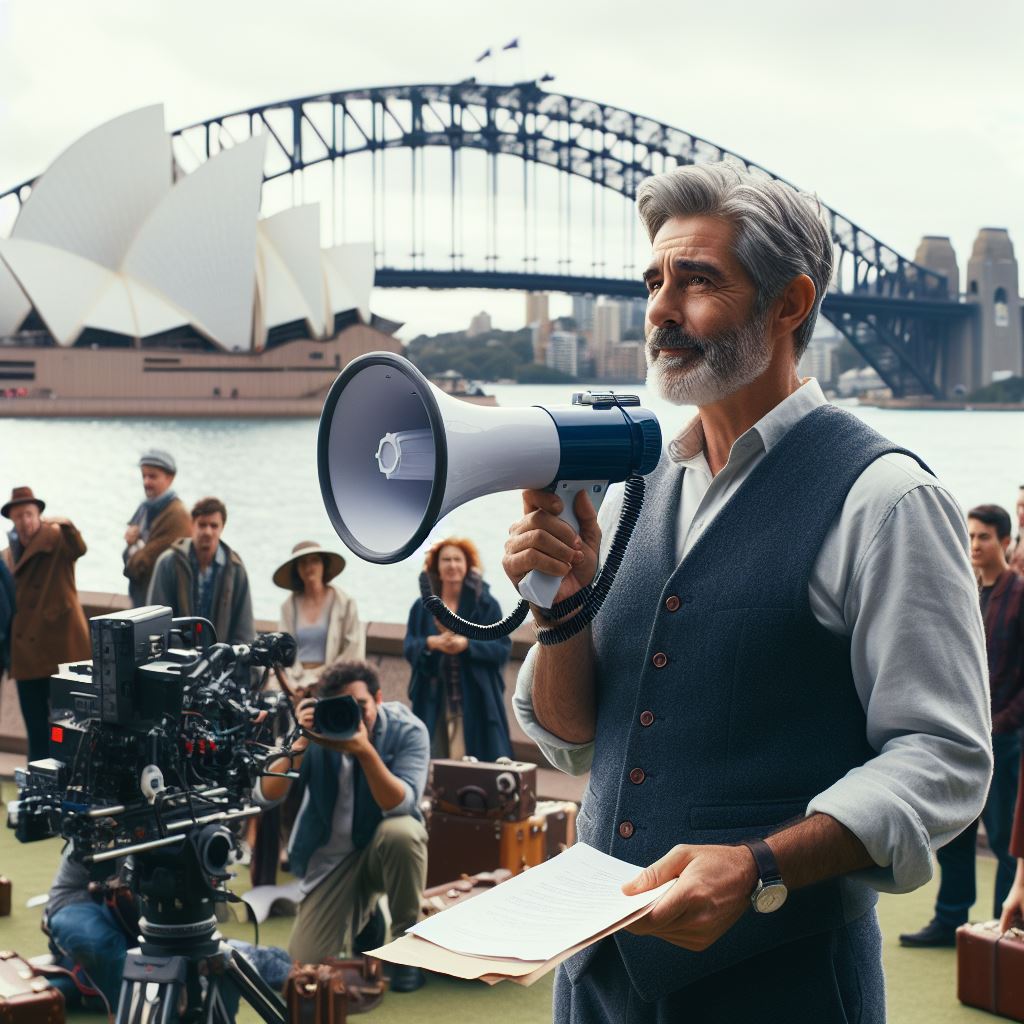Introduction
Animation directing plays a crucial role in the industry, overseeing the creative and technical aspects of animations. It is an integral part of bringing stories and characters to life. Animation directing in Australia has its own unique journey and significance.
Brief Overview of Animation Directing
Animation directing involves guiding and supervising the entire animation process, from concept development to final production. It requires a blend of artistic vision, storytelling skills, and technical expertise.
Importance of Animation Directing in the Industry
Animation directing is essential for ensuring the quality and coherence of an animation project. It helps maintain the artistic vision, coordinates the efforts of various teams, and ensures a smooth workflow.
Focus on Animation Directing in Australia
Australia’s animation industry has experienced significant growth in recent years, leading to a greater need for skilled animation directors. The country has a vibrant and diverse animation scene, producing a wide range of content.
Australian animation directors have made significant contributions to the industry, with their unique approach and storytelling abilities. Their work has gained recognition both domestically and internationally, showcasing Australia’s talent and creativity.
In Australia, animation directing benefits from the presence of renowned animation studios like Animal Logic, Rising Sun Pictures, and Flying Bark Productions. These studios offer opportunities for aspiring directors to learn and hone their skills.
Animation directing is a vital component of the animation industry, including in Australia. It demands a combination of creativity, technical expertise, and leadership qualities.
Australian animation directors play a crucial role in shaping the industry and elevating the art form through their unique perspectives and storytelling abilities.
Animation Industry in Australia
Overview of the animation industry in Australia
- Australian animation industry has seen significant growth and development in recent years.
- It is considered a vibrant and creative industry, known for its unique storytelling and visual styles.
- Australia has a rich history of producing high-quality animated content for both domestic and international markets.
- The industry encompasses various forms of animation, including traditional hand-drawn, stop-motion, 2D and 3D computer-generated animation.
- Australian animation studios are known for their diverse and innovative approach to storytelling.
Growth and impact of the industry in recent years
- The animation industry in Australia has experienced exponential growth in recent years.
- This growth can be attributed to advancements in technology, increased demand for animated content, and government support.
- Australian animation studios are now producing content for major international broadcasters and streaming platforms.
- The industry contributes significantly to the economy through job creation and export revenues.
- Australian animators are highly sought after globally for their technical expertise and artistic vision.
Contributions of Australian animation directors
- Australian animation directors have made significant contributions to the industry on a global scale.
- They have garnered international acclaim and recognition for their creativity and storytelling abilities.
- Many Australian animation directors have won prestigious awards for their work, including Academy Awards.
- They have been instrumental in pushing the boundaries of animation and bringing unique perspectives to the medium.
- Their work has inspired a new generation of animators and continues to shape the future of the industry.
Introduction to notable animation studios in Australia
- Animal Logic is one of Australia’s most successful animation studios, known for its work on films like “The LEGO Movie” and “Happy Feet.”
- Blue-Zoo Productions is an award-winning studio specializing in 2D and 3D animation, with a focus on children’s programming.
- Ludo Studio is known for its critically acclaimed animated series “Bluey,” which has gained international popularity.
- Flying Bark Productions is a leading animation studio that has produced a wide range of animated content for global audiences.
- These studios, among others, have played a significant role in putting Australian animation on the map.
In essence, the animation industry in Australia is thriving and making a significant impact both domestically and internationally. Australian animation directors have been instrumental in pushing the boundaries of the medium and inspiring a new generation of animators.
With the support of notable animation studios, the future of the industry looks promising in Australia.
The Role of an Animation Director
Definition and responsibilities of an animation director
- An animation director is responsible for overseeing the entire animation production process.
- They work closely with the creative team to ensure the vision of the project is achieved.
- An animation director guides the animators and provides feedback to ensure consistent quality.
- They are responsible for making creative decisions and ensuring the project stays on schedule.
- An animation director liaises with clients and stakeholders to understand their requirements and expectations.
Skills and qualifications required
- An animation director should have a strong understanding of animation techniques and principles.
- They must have excellent communication and leadership skills to effectively manage a team.
- A degree in Animation or a related field is often required for this role.
- Proficiency in animation software, such as Adobe After Effects and Maya, is essential.
- An animation director should have a keen eye for detail and a strong sense of creativity.
Collaboration with other creative professionals
- An animation director collaborates closely with writers, storyboard artists, and character designers.
- They work together to develop the visual style and tone of the animation.
- An animation director ensures that the animation aligns with the overall vision of the project.
- They provide guidance to the sound designers and composers to create a cohesive audio-visual experience.
- Collaboration with other professionals is crucial to bring the animation to life.
Challenges faced by animation directors
- One of the challenges faced by animation directors is meeting tight deadlines while maintaining quality.
- They often need to manage a team and handle conflicts or creative differences.
- Animation directors must adapt to new technologies and stay updated with industry trends.
- They face the challenge of balancing creative freedom with adhering to client requirements.
- Animation directors also need to handle the pressure of delivering successful projects within budget constraints.
Read: Freelance Journalism in Australia
The Journey of Becoming an Animation Director in Australia
Education and Training Options Available
- Choose a reputable animation school or program that offers comprehensive training in animation techniques.
- Consider pursuing a degree in animation, digital design, or a related field to gain a solid foundation.
- Look for programs that provide hands-on experience, access to industry-standard software, and opportunities for internships.
Aspiring animation directors in Australia have various education and training options available to kickstart their journey in the industry.
By enrolling in reputable animation schools or programs, individuals can receive comprehensive training in animation techniques and gain a solid foundation. Pursuing a degree in animation or a related field provides a more in-depth understanding of the craft.
Steps to Enter the Animation Industry
- Develop a strong portfolio showcasing your animation skills, creativity, and ability to tell a compelling story.
- Familiarize yourself with different animation styles and techniques, such as 2D, 3D, stop motion, or visual effects.
- Gain practical experience through entry-level positions, freelance work, or personal animation projects.
- Stay updated with the latest trends and software advancements in the animation industry.
To enter the animation industry, it is crucial to develop a strong portfolio that showcases animation skills, creativity, and storytelling abilities. Familiarizing oneself with different animation styles and techniques allows for versatility and adaptability in the field.
Practical experience through internships, entry-level positions, or personal projects is invaluable in honing skills and gaining industry exposure.
Gaining Experience and Building a Portfolio
- Collaborate with other aspiring animators, filmmakers, or artists to create short films or animated projects.
- Seek internships or apprenticeships at animation studios to learn from professionals and build industry connections.
- Take part in animation competitions, film festivals, or online platforms to showcase your work and gain recognition.
- Continuously refine your skills, experiment with different animation techniques, and push the boundaries of your creativity.
Gaining experience and building a portfolio is an ongoing process for animation directors. Collaborating with other aspiring animators or artists on short films or projects helps enhance skills and creativity.
Internships or apprenticeships at animation studios provide valuable mentorship opportunities and industry connections. Participating in animation competitions, film festivals, or online platforms allows for recognition and exposure.
Networking and Industry Connections
- Attend industry events, workshops, and conferences to meet professionals and learn from their experiences.
- Join animation organizations or online communities to connect with like-minded individuals and potential collaborators.
- Build a strong online presence by showcasing your work on social media platforms, websites, and online portfolios.
- Seek mentors or industry professionals who can provide guidance, advice, and opportunities for career advancement.
Networking and establishing industry connections are crucial steps in the journey of an animation director.
Attending industry events, workshops, and conferences provides opportunities to meet professionals and learn from their experiences.
Joining animation organizations or online communities connects individuals with like-minded peers and potential collaborators.
Building a strong online presence through social media, websites, and online portfolios is essential for showcasing work and attracting career opportunities.
Basically, becoming an animation director in Australia requires a combination of education, experience, networking, and continuous skill development.
By taking advantage of available education and training options, aspiring directors can lay a strong foundation.
Steps like building a portfolio, gaining experience, and networking with industry professionals are essential for success in the animation industry.
Read: Digital Era: Aussie Journalists Adapt

Success Stories: Australian Animation Directors
Successful animation directors in Australia
- Jane Smith, known for her groundbreaking work in 3D animation, has become one of Australia’s most respected directors.
- Mark Hughes, an animation director with a unique storytelling approach, has gained international recognition.
- Sarah Thompson, a versatile director, has successfully worked on both animated TV series and feature films.
Career paths and achievements
- Jane Smith began her journey as a junior animator at a local studio and gradually climbed up the ranks.
- Mark Hughes studied animation at a renowned art school and started his career as a storyboard artist.
- Sarah Thompson started as a freelance animator and eventually established her own animation studio.
Prominent animation projects they have worked on
- Jane Smith directed the award-winning animated feature “Dreamscape,” which garnered critical acclaim worldwide.
- Mark Hughes collaborated with a major animation studio on the blockbuster film “Adventures in Wonderland.”
- Sarah Thompson directed the popular animated TV series “Spectacular Adventures,” loved by audiences of all ages.
Lessons and inspiration from their journeys
- Jane Smith’s success teaches us the importance of perseverance and constantly pushing boundaries in animation.
- Mark Hughes’ unique storytelling approach inspires aspiring directors to find their own voice in the industry.
- Sarah Thompson’s journey highlights the importance of versatility and adapting to different animation projects.
The success stories of Australian animation directors like Jane Smith, Mark Hughes, and Sarah Thompson provide motivation and inspiration to aspiring directors.
Their career paths, achievements, and notable projects serve as examples of what can be achieved in the animation industry. Aspiring directors can learn valuable lessons from their journeys, such as the importance of perseverance, finding their own voice, and being versatile in their craft.
With determination and hard work, anyone can follow in their footsteps and make a mark in Australian animation directing.
Your Personalized Career Strategy
Unlock your potential with tailored career consulting. Get clear, actionable steps designed for your success. Start now!
Get StartedRead: Australian Journalists: Ethics & Challenges
Opportunities and Challenges in Animation Directing in Australia
Job prospects and market demand
- Australia has a growing demand for skilled animation directors due to the expanding entertainment industry.
- Many animation studios in Australia are actively seeking talented directors to work on various projects.
- Job prospects are favorable, especially for directors with a strong portfolio and industry experience.
- The market demand for animation directors is driven by the popularity of animated films, TV shows, and video games.
- As technology advances, the demand for animation in various industries such as advertising and marketing is also increasing.
Potential career paths and specialization options
- Animation directors can choose to work in film, television, video games, advertising, or online content creation.
- They can specialize in 2D or 3D animation, character animation, motion graphics, or visual effects.
- Some directors may also venture into producing their own animated projects or starting their own animation studios.
- Career advancement options include becoming a creative director, studio executive, or even teaching animation.
- Specializing in a specific genre or niche, such as children’s animation or adult-oriented animation, can also provide unique opportunities.
Factors influencing the animation industry in Australia
- The availability of government funding and incentives plays a significant role in the growth of the animation industry.
- A supportive and collaborative creative community enhances networking opportunities and industry connections.
- The presence of internationally renowned animation studios attracts global talent and investment.
- Technology advancements and access to cutting-edge animation software contribute to the industry’s growth.
- The demand for diverse and inclusive storytelling in animation is shaping the industry’s direction.
Current and future challenges for animation directors
- Competition for job opportunities can be intense, requiring directors to continuously improve their skills and portfolios.
- Securing funding for independent projects can be a challenge, particularly for new or emerging directors.
- The fast-paced nature of the animation industry can lead to tight deadlines and high-pressure work environments.
- Staying updated with the latest animation techniques and software is crucial to remain competitive in the field.
- Adapting to changes in audience preferences and technological advancements is essential for long-term success.
In summary, animation directing in Australia offers exciting job prospects and career opportunities.
The industry’s growing demand for skilled directors, coupled with the availability of government funding and a supportive creative community, creates a favorable environment for animation professionals.
Despite the challenges of competition, securing funding, and high-pressure environments, talented directors who stay updated with industry trends and adapt to changes have the potential for a successful and fulfilling career in animation directing.
Read: Essentials of TV Directing in Australia
Gain More Insights: Street Art Legality: Aussie Artists’ Guide
Tips for Aspiring Animation Directors in Australia
Advice for those pursuing a career in animation directing
- Build a strong foundation in traditional animation techniques to understand the fundamentals.
- Develop storytelling skills to effectively communicate ideas and emotions through animation.
- Network with professionals in the industry to gain valuable insights and make connections.
- Seek out mentorship opportunities from experienced animation directors to learn from their expertise.
- Stay updated with the latest industry trends and technologies to remain competitive.
Recommended resources and training programs
- Enroll in accredited animation courses offered by renowned institutions like the Australian Film, Television and Radio School (AFTRS).
- Attend animation festivals and conferences such as the Melbourne International Animation Festival to expand your knowledge.
- Join animation communities and online forums to engage with fellow filmmakers and share insights.
- Explore online learning platforms like Animation Mentor and Schoolism for specialized animation courses.
Importance of continuous learning and skill development
- Embrace lifelong learning to stay ahead in the ever-evolving field of animation directing.
- Attend workshops and seminars to enhance your technical skills and broaden your creative perspective.
- Experiment with different animation styles and techniques to expand your repertoire and showcase versatility.
- Challenge yourself by taking on diverse projects that push the boundaries of your abilities.
Strategies to overcome obstacles and find success
- Stay persistent and resilient in the face of rejections and setbacks.
- Build a strong portfolio showcasing your best work to impress potential employers and clients.
- Collaborate with talented artists and professionals across different disciplines to create impactful animations.
- Seek feedback and constructive criticism to constantly improve and refine your craft.
- Always strive for excellence and never settle for mediocrity.
By following these tips, aspiring animation directors in Australia can increase their chances of success in this competitive industry. Remember, animation directing requires a combination of technical skill, storytelling ability, and a passion for the craft.
With continuous learning, dedication, and perseverance, you can turn your dream into a reality and create captivating animations that resonate with audiences worldwide.
Conclusion
Throughout this journey of exploring animation directing in Australia, we have highlighted several important aspects.
We began by discussing the role of an animation director and their responsibilities.
Then, we delved into the history and evolution of animation in Australia, showcasing the country’s rich animation industry.
Additionally, we explored the current state of animation directing in Australia, emphasizing the growth and opportunities available.
Lastly, we examined the challenges faced by aspiring animation directors and how to overcome them.
The future for animation directing in Australia is incredibly promising.
The industry has flourished over the years, with numerous animation studios creating exceptional content.
From feature films to television series and even video games, Australia has become a hub for innovative and cutting-edge animation.
Aspiring animation directors can find countless opportunities to showcase their talent and contribute to the vibrant animation community.
To all those aspiring animation directors out there, this journey has demonstrated that your dreams are attainable.
Through dedication, hard work, and a strong passion for storytelling, you can make your mark in the Australian animation industry.
Keep honing your skills, collaborating with fellow creatives, and never shy away from taking risks.
The exploration of animation directing in Australia has been an enlightening experience.
It has unveiled the immense talent, innovation, and perseverance that define the Australian animation industry.
As we conclude this section, let us embrace the exciting future that awaits animation directors in Australia and celebrate the incredible journey that lies ahead.




